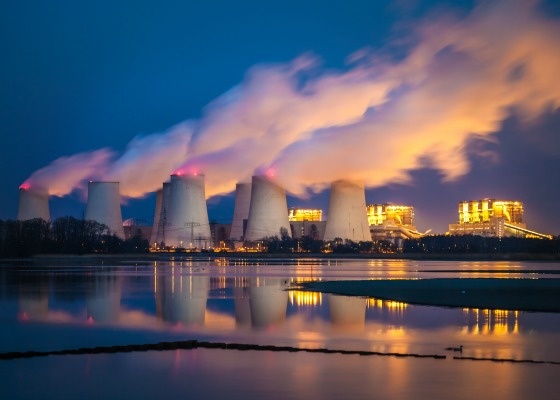We throw away enough heat to fulfill our total demand in heating, if only we could move the heat from where it is wasted to where it is needed.
Avoiding wastage of materials is a widely accepted principle to sustainability, with both householders and key industries. Yet as a country the UK is allowing vast amounts of heat energy to escape into the atmosphere or different bodies of water, when it could be used to warm most of our buildings and homes in high density areas.
It is a situation that most of the advanced European countries have already rectified, though progress is being made in the UK to harvest and reuse significant amounts of heat currently being lost.
Re-using waste heat
While space heating accounts for as much of our total energy usage as transport and electricity generation together, power stations and heavy industry are guilty of ‘dumping’ heat which could be used elsewhere.
A key to solving this would be much greater adoption of district heating systems: where communal mains distribute medium or high temperature hot water to homes and other buildings across a wide area – a concept explained in our eGuide, Design for the Future.
Although the idea has never achieved the popularity it enjoys in Scandinavia, Britain has schemes dating back more than half a century, and Government backing is again helping to push its huge potential. Recovering heat from burning refuse is just one approach already proven in places like the London Borough of Lewisham, with another major plant just coming on stream in Oxfordshire.
Bicester burning with sustainable ambition
With the county council keen to cut its multi-million landfill costs, Viridor was awarded a contract to construct an incinerator at Ardley near Bicester, with the four year build now coming to an end, and the first delivery of non-recyclable waste having arrived to enable the firm to begin commissioning. Not only is the facility capable of burning 300,000 tonnes of waste annually, but it will generate enough electricity to supply 38,000 homes. But what about the heat?
Examples of good practice can be seen in places such as Sheffield, Nottingham and other cities, yet typically, such waste burning stations squander more heat energy than they generate in electricity.
No definite plans exist to use the surplus from Bicester, nor even to route waste heat from the delayed Hinckley Point nuclear power station to less densely grouped residential properties in its region. Meanwhile most of our other ageing power and new power stations continue to use the sea, cooling towers as a heat sinks, and many coal fired stations run at efficiencies of below 50 per cent .
To understand what a lost opportunity this is, we can look at the example of a Swedish district heating company where a hugely impressive 96 percent of its input comes from recycled sources: including industry, incinerators, sewage farms and then, during the coldest weather, Combined Heat and Power plants running on biofuel.
In the future, all of these heat sources could be connected to UK consumers who require affordable warmth, via new district heating schemes.
Key takeaways
- We throw away enough heat to fulfil our total demand in heating
- It is not a planning requirement to recycle waste energies such as heat from incinerators



